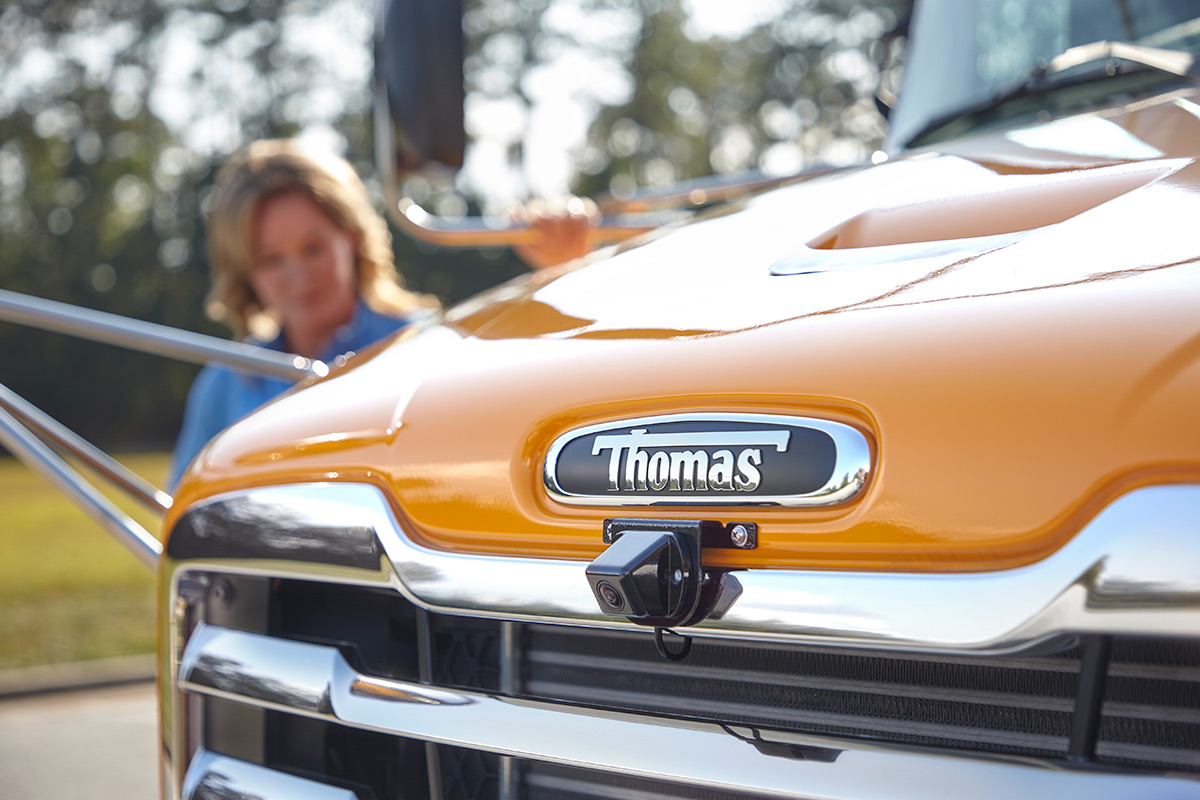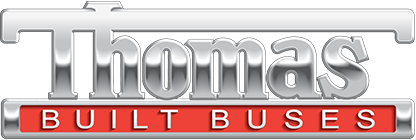
A behind-the-scenes look at our historic celebration and transition of the Type D legacy
It isn’t every day you get to celebrate a major milestone, so we’ve captured the iconic plant transition of our Type D production and commemorated the milestone in a video celebration. Chronicling the final steps of the last Type D bus to roll off the historic assembly line, the video features…

At Thomas Built Buses, we view safety as a journey, not a destination. Safety is at the core of everything we do—from our manufacturing processes to our testing protocols and focus on continuous innovation. It is more than just a feature; it’s an interconnected facet of all our operations.
Let’s look at how this commitment to safety is woven into every phase of our process, from…

What makes the electric Saf-T-Liner C2 Jouley school bus an excellent vehicle for today and the future? Our free Electric School Bus Curriculum answers this and more.
Today’s students are increasingly interested in electric vehicles and environmentally smart transportation options. This dynamic, professionally designed curriculum provides teachers with tools and lessons to increase…

In today’s rapidly evolving industrial landscape, sustainability has become a global focus. But what does that even mean? For Thomas Built Buses, it’s about defining our commitment to our organization, our industry and the communities we serve. While our electric school bus, the Saf-T-Liner® C2 Jouley®, and its many milestones (including the recent delivery of our 1,000th) often come to…
Did you know a school bus can be spec’d in thousands of different ways? There are literally hundreds of different features that will influence the safety, performance and efficiency of a new school bus. And even the most innocuous of specs can have major impacts in your fleet. For example, if you live in a colder climate, spec’ing a heated driver seat will decrease your idle time during bus warmup, which will improve your overall fuel economy. From fuel type to electronics, wiring, components and more, school buses can be completely customized to meet your needs. But with budget restraints and lack of information about the latest and greatest features, the decision on how to equip your new school buses can be overwhelming.
Spec’ing is a strategic endeavor, one that is personal and unique to each school district. That’s why it’s important to get your needs and wants in order first and then speak with a local dealer to help finalize the spec’ing process.
When it’s time to purchase new school buses, here are a few tips for spec’ing your next school bus.
-
Start with your list of needs, the things that won’t change
-
Next, outline your list of “wants.”
-
Ask tough questions
-
Pull in your budget
-
Have an open mind
Start with your list of needs, the things that won’t change.
This includes school bus type, capacity, state-mandated specs like key safety features and components that are non-negotiables, and even fuel type such as the industry-standard, clean-diesel or even compressed natural gas, propane, gasoline.
Next, outline your list of “wants.”
What features would you like to have? Are you interested in state-of-the-art safety innovations such as the PV360® multi-camera which can give the driver visibility all the way around the exterior of the bus, onboard WiFi, stop-arm cameras or electronic stability control? There are a number of new features on the market today, like Thomas Built’s BusWise® Technologies, that are not only making school buses safer and easier to maintain, but also smarter and lower cost during the entire lifecycle of the bus.
Ask tough questions.
Challenge your dealer, your peers and your own assumptions when reviewing bus specs. Ask your dealer tough questions about the true cost of a feature, the long-term feasibility and performance of a bus or component, and even the cleanliness of new alternative fuel type. For example, did you know that clean-diesel school buses today are comparable to or even cleaner than other alternative fuels, based on EPA regulated emissions? Do your homework, back up manufacturer claims with data and talk to your peers.
Pull in your budget.
For many districts, initial purchase price is key to spec’ing a bus. In addition to acquisition costs, look at the total cost of ownership of a bus. Many newer components and features have a higher acquisition cost, but end up saving you money throughout the life of your bus.
On the flip side, consider added costs that new features may necessitate. For example, some alternative fuels such as compressed natural gas and propane come with added costs of infrastructure upgrades, technician and driver training. Still other fuels like gasoline come with a low initial price tag, but may end up costing your fleet much more in the long-run when the engine needs replacement two to three times during the lifecycle of the bus. Knowing what additional costs new fuel types or features may require is an essential part of your research.
Last, consider financing. Special financing rates, terms and programs may allow you to purchase more than you expected and even save money in the long run. Ask your dealer to do the math, and you may be surprised at what you find out.
Have an open mind.
Spec’ing a bus is a strategic endeavor. Consider the costs and benefits of many of the specifications. Your Thomas Built dealer will work one-on-one with you to spec a bus that will be the best fit for you and your district. Surprisingly, many of the “wants” on your list may become a reality.
When you’re ready, give your local dealer a call and start the spec’ing process together.
